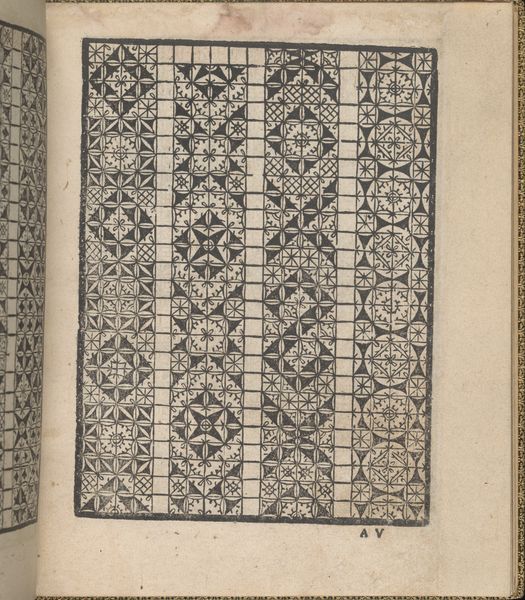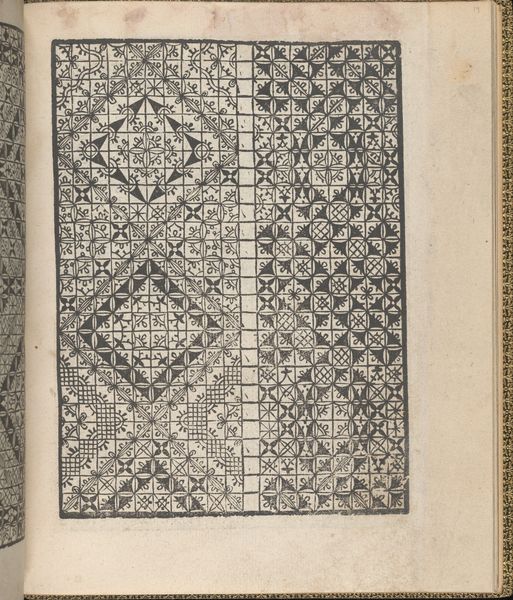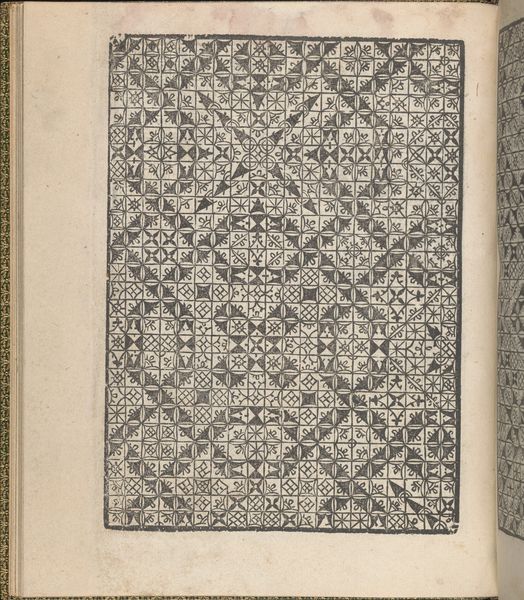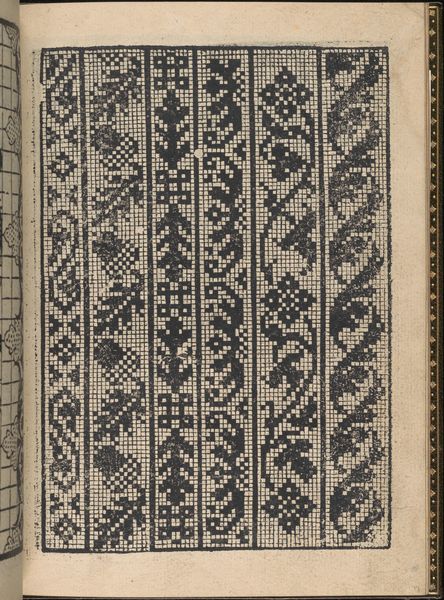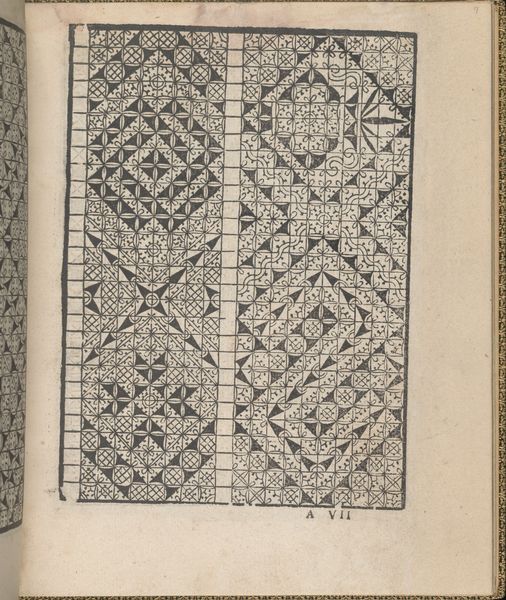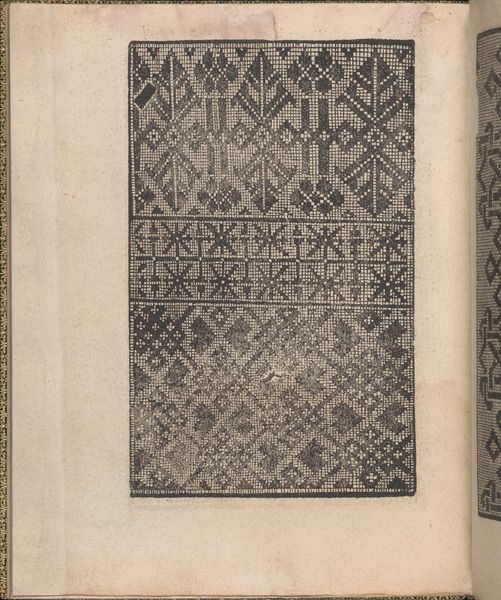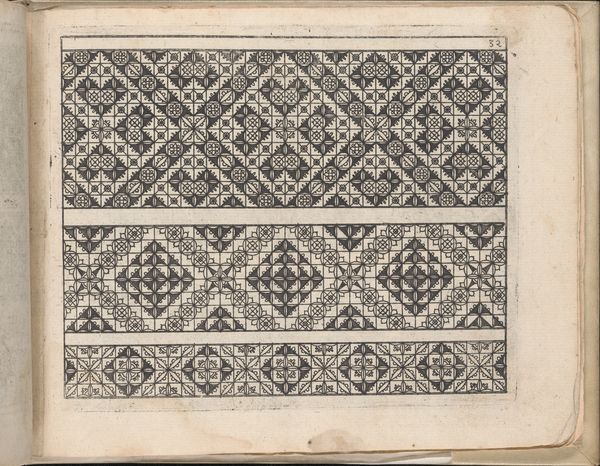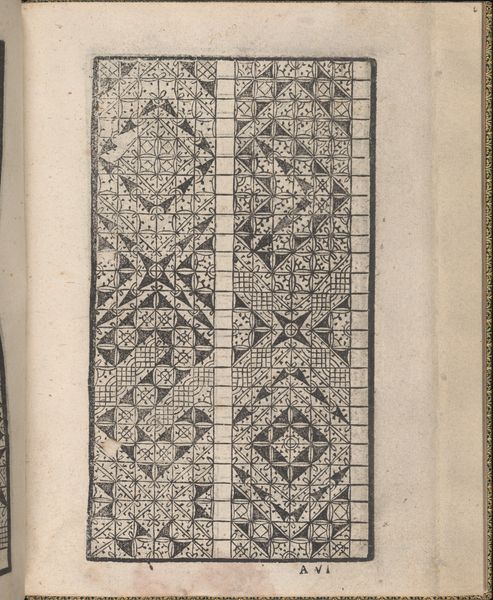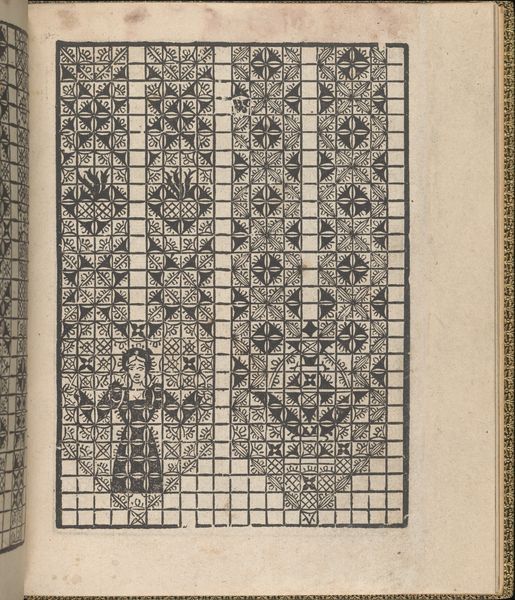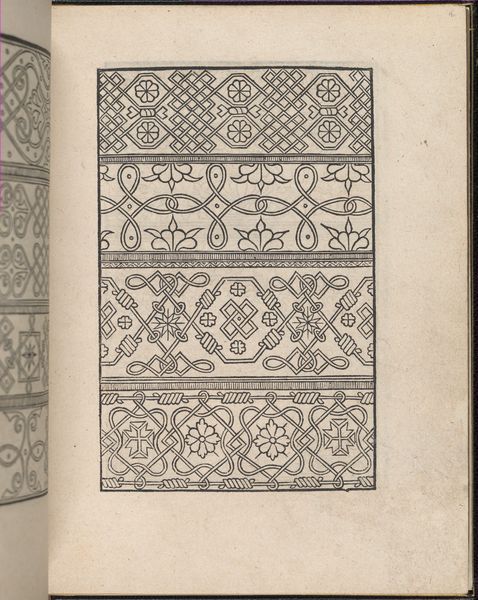
Giardineto novo di punti tagliati et gropposi per exercitio & ornamento delle donne (Venice 1554), page 5 (verso) 1554
0:00
0:00
drawing, ornament, print, paper, engraving
#
drawing
#
ornament
#
medieval
# print
#
pattern
#
paper
#
geometric
#
decorative-art
#
engraving
Dimensions: 7-5/8 x 6-3/8 x 1/4 in. (19.4 x 16.2 x 0.6 cm)
Copyright: Public Domain
Editor: This is page 5 from "Giardineto novo di punti tagliati et gropposi," created in Venice in 1554 by Matteo Pagano. It's an engraved pattern, quite intricate. What’s striking to me is how ordered and repetitive it seems, yet somehow still engaging. How do you interpret this work in its historical context? Curator: Well, looking at this pattern book through a historical lens, it's crucial to understand its public role in 16th-century society. These weren't just idle doodles. Pattern books like this one provided essential designs for lacemakers and embroiderers. Imagine the workshops and homes where women used these patterns—they shaped domestic production. How does that change your view of this design? Editor: It makes me think about accessibility of art. These designs had very practical purposes. I’m so used to thinking about art in museums and galleries, but this served a different public function. Curator: Exactly. The "public" in this context is key. The imagery itself is intertwined with the economy of the time, it fueled a demand. Furthermore, think about the power dynamic embedded here: the artist providing designs that then become part of other artisans’ creations. Who gets the recognition, and how does that reflect social structures? Editor: That's a good point. I didn’t really consider the socioeconomic impacts. Are there any specific design elements in the pattern that reveal insights into Venetian society at the time? Curator: Absolutely. Consider the geometric motifs. Where else do you see these shapes repeated? Architecture, textiles… their pervasiveness suggests shared cultural values around order and ornamentation. Think of Venice, a trade hub—patterns were not just designs but also portable commodities. Does seeing it as a form of communication change your understanding? Editor: Yes, definitely. Seeing the wider historical context really shifts how I see this artwork; it has made me realize there is more than initially meets the eye. Thank you for your insights! Curator: My pleasure. Considering the politics of imagery gives us much richer layers to understand!
Comments
No comments
Be the first to comment and join the conversation on the ultimate creative platform.
